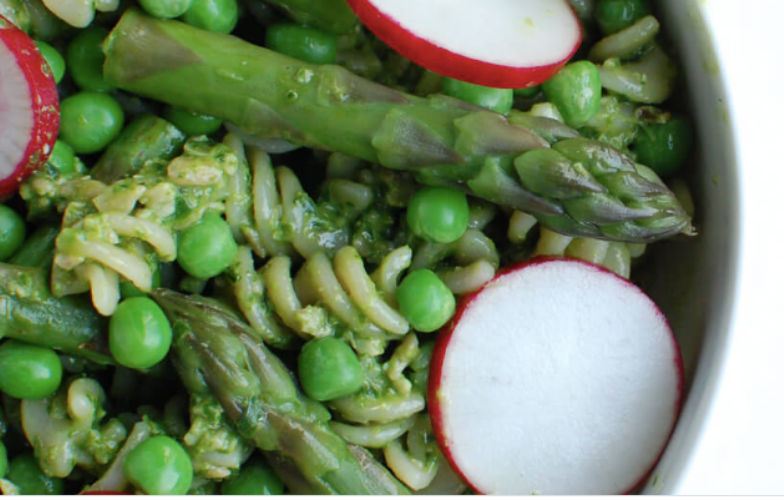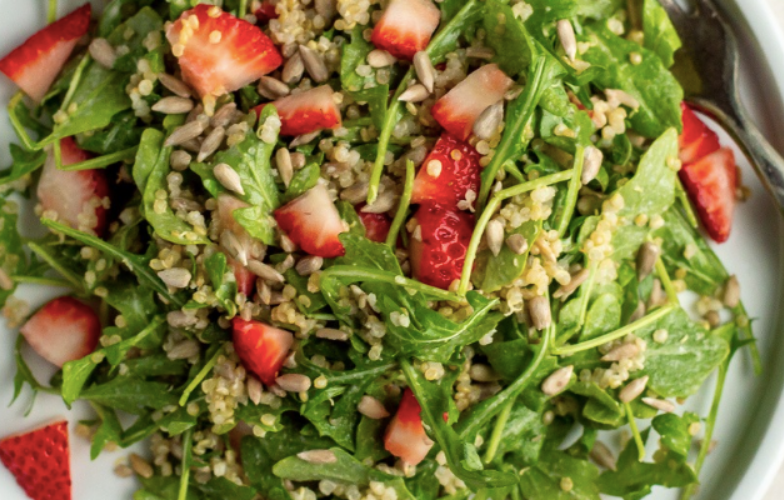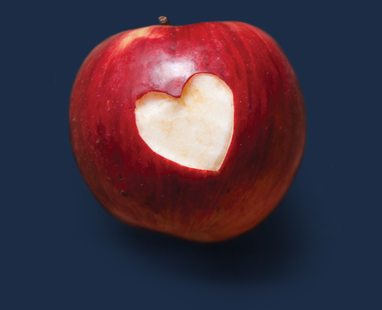Tastes of the Season
Simple Tips and Recipes for Eating with Spring
Spring is finally here! After a long winter, it feels wonderful to welcome back warmer days, brighter skies, and fresh local produce. Transitioning to lighter, vibrant foods that spring naturally offers is a wonderful way to energize your body and reconnect with nature’s rhythms.
Eating Seasonally and Locally!
Eating seasonally and locally isn’t just delicious—it’s powerful nourishment for your body. Often, we’ve grown used to fruits and veggies from around the world being available year-round, such as tropical pineapples in the depths of winter. Although convenient, there’s a better, healthier, and tastier way to enjoy food. Instead, we can embrace what’s local and fresh right now.
Eating With The Seasons! …just as Mother Nature intended it.
Just imagine biting into a perfectly ripe, juicy strawberry freshly picked from a nearby farm. It’s a mouth-watering moment and simply doesn’t compare to one that’s been picked unripe and traveled thousands of miles to land on your grocery store shelves. Moreover, local, seasonal produce is bursting with flavour. Studies show it’s also more nutrient-dense, kinder to the environment, and easier on your wallet.
Eating with the seasons supports your health in profound ways. You can feel the difference that seasonal foods make, boosting energy, clarity, and vitality from one season to the next.
Below, you’ll find a list of my favourite Spring foods, along with delicious recipes and simple tips to help you savour the very best of the season. Reconnect with nature one delicious bite at a time!
Spring Foods!
So, to help embrace the season, here are my top suggestions for Spring foods and how to add them to your diet. Most require minimal cooking so they’re ideal for those quick, delicious meals when you would rather be out enjoying the nice weather.
Arugula
This green brings the flavour with its peppery, fresh, and sometimes slightly bitter flavour. If you’re looking to reduce inflammation consider adding arugula as these greens are rich in vitamins like A, K and folate. Plus chlorophyll and fibre to keep you full. The phytochemicals, antioxidants and essential minerals found in arugula help cleanse out toxins in the body.
How to enjoy it
Arugula can be eaten cooked or uncooked. Eating it raw? Just toss raw greens in a bowl with other veggies, nuts or seeds and drizzle with some extra virgin olive oil and aged balsamic vinegar or citrus juice. Chop or tear them into bite-sized pieces to enhance the texture of your salad. Cooked you can add them to stir frys or mix into pesto sauces.
Artichokes
A wonderful choice for the liver and the gallbladder because it increases bile flow. Available in both spring and fall, artichokes are rich in folic acid, vitamin C, B-complex vitamins, and many minerals. These nutrients help lower cholesterol, reduce free radicals, and ensure optimal metabolic cell function.
How to eat them
There is an art and science to the basic way of cooking an artichoke. Watch this video to help conquer your fear of cooking artichokes here.
Asparagus
Asparagus’s bright grassy flavour shines bright in Springtime and is packed full of nutrients that can help to cleanse the kidneys and reduce water retention. It is also a rich source of folate as well as high in glutathione, a vital antioxidant for detox. Abundant in vitamin K, as well as copper, selenium, B vitamins and many other important nutrients.
How to eat it
Asparagus is delicious simply sautéed with a garlic and sea salt in some butter, ghee, coconut oil, or even a little vegetable or chicken stock. Just be sure not to overcook it! You want it to remain vibrant green and retain its shape as it softens a bit but stop cooking before it gets too wilted. About 10 minutes should do it!
Dandelion
Stimulates the digestive juices, helps to digest fats and supports the body’s natural detoxification processes. Spring is the ideal time to benefit from dandelion greens, as they become too bitter in the summer.
How to eat it
You can juice with dandelion leaves, cook with dandelion leaves and drink dandelion tea.
Garlic
Antibacterial, anti-viral, anti-fungal and anti-cancer. Garlic is one of the best antioxidants and is vital for proper detoxification.
What to do with it
You can add garlic to whatever your heart desires but if you’re looking to activate the allicin in it- chop, crush, cut the bulbs and let sit for 10 minutes.
Mint
Mint grows like a weed (try growing it in a container for easy access!) and has powerful healing properties. Do you have seasonal allergies? Mint contains an antioxidant called rosmarinic acid, which can relieve seasonal allergy symptoms while the menthol it contains helps to naturally decongest your stuffy nose. And never doubt mints ability to soothe an upset stomach.
What to do with it
Mint is a delicate herb so it’s better not to cook it. I love adding it to water or iced tea for refreshing natural flavouring, it also makes a great edible garnish, and can be chopped and added to fruit salads.
Peas
This legume is extra special for Spring with a quick and short growing period. But they’re worth it. With antioxidants that boost your immunity like Vitamins C, E, zinc, and catechin and vitamins A, B, and coumestrol to help with inflammation.
How to eat them
Eat them straight from the garden or blanch your peas quickly, allow to cool, and then add to salads for on-the-go lunches, or add them to salads, smoothies, stir- fries, noodle dishes, and basically anything! Snap peas can also be eaten ‘as is’ for easy snacking.
Radishes
A great detoxifier, radishes are great at removing waste and toxins from both the stomach and liver. They are also a natural diuretic and help treat urinary and kidney conditions, not to mention fight cancer, hydrate your skin, reduce fevers, and even treat insect bites.
How to eat them
I love them sliced thin for a raw salad, and you can also roast them, Great sliced in half – or leave them whole to use in a veggie dip platter.
Rhubarb
Rhubarb is a true Spring vegetable. Ever bitten into raw rhubarb? Did your cheeks pucker? That’s because the raw stalks have a very tart taste. Stay away from the leaves as they’re toxic but the stalks are completely edible and rich in antioxidants. Full of anthocyanins (which give it its red colour) and proanthocyanidins, rhubarb is anti-bacterial, anti-inflammatory, and anti-cancer.
How to eat it
Since it is so tart while raw, the best way to eat rhubarb is to cook it! A lot of recipes include adding sugar when cooking but opt for honey, vinegars and/or citruses to tame the tart and keep the sugar content low. You can add it raw to smoothies for the tart kick if you like the flavour!
Strawberries
We made it back to that strawberry memory! And these late Spring/early Summer berries which are shaped like little hearts are power packed with anthocyanin, quercetin, and potassium content can help protect against heart disease. While strawberries do contain fructose (sugar), strawberries can actually help balance blood sugar, and the polyphenols they contain will support immunity, healthy cell renewal, and many other functions.What to do with them
Fresh (washed) off the vine! Add to smoothies, yogurt, chia pudding, oatmeal, or salads. You can make a quick chia jam by chopping them up and simmering in a bit of water with a cinnamon stick and then adding some vanilla extract and maple syrup at the end. Then top your toast with this jam for breakfast or a snack!
By incorporating these seasonal delights into your diet, you not only support local farmers and reduce your carbon footprint but also nourish your body with the freshest and most nutrient-dense foods available. Here’s to embracing the bounty of spring and savoring every delicious bite!
Still wondering how to incorporate these into your diet? You’ll find 3 tasty and nutritious Spring recipes below.
Enjoy!






Good to remind everyone of how us older folks shopped and cook before “jet fresh” became the norm.
Thank you for connecting this to the environment and writing about the importance of soil.
I’m glad you enjoyed the article and yes, the environment and quality of our soil is very much affected by the commercial growing practices. It’s a big topic!
Thank you marvellous choices